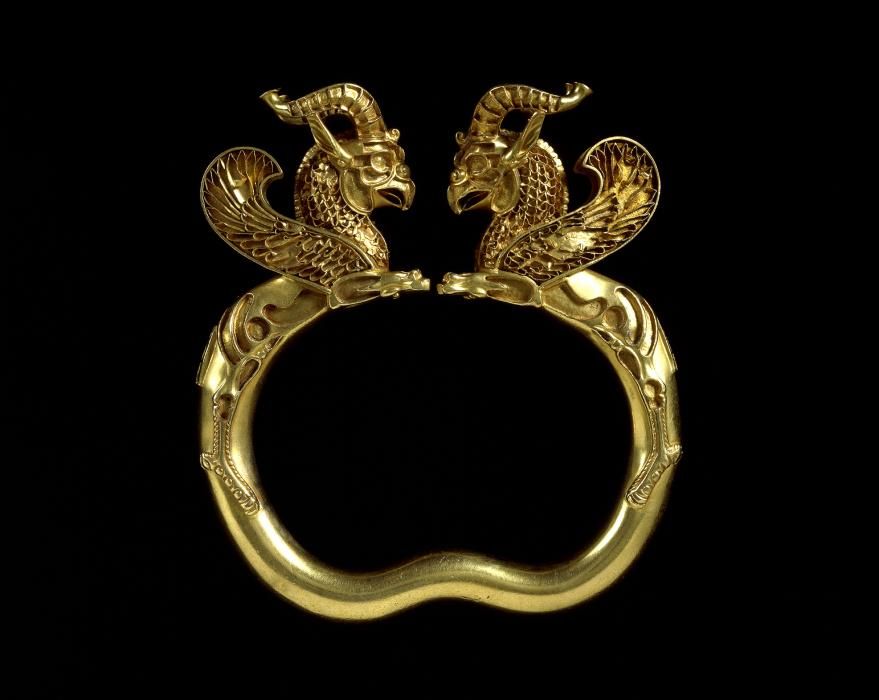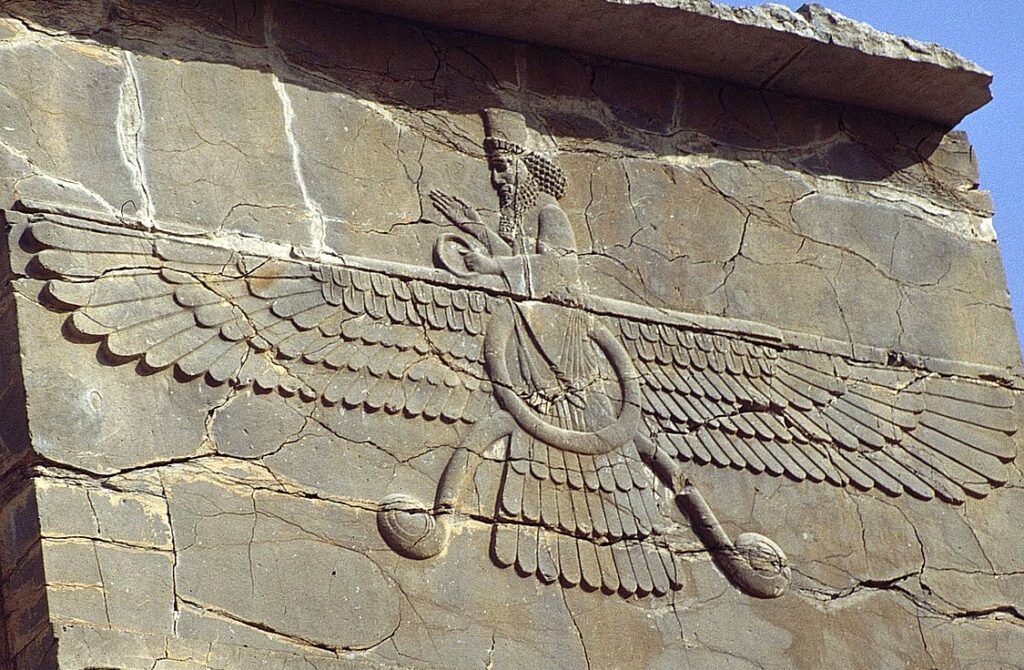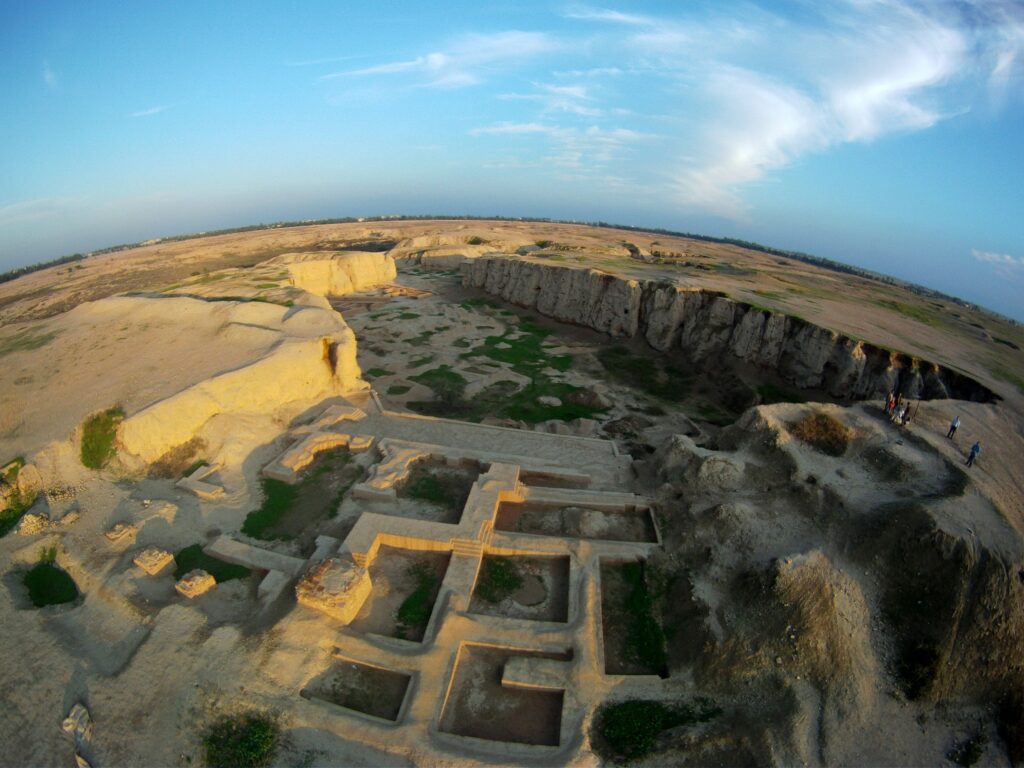អរិយធម៌ពែក្ស ដែលត្រូវបានគេស្គាល់ថាជាអាណាចក្រ Achaemenid ដែលមានទំហំទឹកដីយ៉ាងធំធេង ដោយគ្រប់ដណ្តប់លើតំបន់ជាច្រើនដែលសព្វថ្ងៃមានដូចជាប្រទេសអ៊ីរ៉ង់ ទួគី ផ្នែកខ្លះនៃអេហ្ស៊ីប និងផ្នែកខ្លះនៃប៉ាគីស្ថានជាដើម។ មុននឹងក្លាយជាអាណាចក្រពែក្ស ពែក្សគឺជាជនជាតិដែលរស់នៅតាមតំបន់ទន្លេ Tigris ដែលស្ថិតនៅក្បែរ មេសូប៉ូតាមី និងអេហ្ស៊ីប។ នៅស.វ.ទី៥ មុនគ.ស. ពែក្សបានក្លាយជារដ្ឋមួយ និងគ្រប់គ្រងដោយស្តេច Cyrus និងក្រោយមកទៀតក្រោមការដឹកនាំរបស់ស្តេច Darius ទី១(ឆ្នាំ៥២២-៤៨៦មុនគ.ស) ត្រូវបានគេដឹងថារដ្ឋមួយនេះបានក្លាយជាអាណាចក្រពែក្សដែលមានវិសាលភាពទឹកដីធំធេង ពីតំបន់ទន្លេសមុទ្រមីឌីទ័ររ៉ាណេរហូតដល់ទន្លេ នីលនៃប្រទេសអេហ្ស៊ីប។
នៅក្នុងប្រវត្តិសាស្រ្តពិភពលោក ពែក្សគឺជាអាណាចក្រដែលបានបង្កើតនូវផ្លូវទំនាក់ទំនងពាណិជ្ជកម្មដោយភ្ជាប់ពី ទ្វីបអាហ្រ្វិច ទៅ អ៊ីរ៉ុប និងអាស៊ី ដែលចាប់ផ្តើមពី តំបន់សំខាន់គឺ Persepolis (អ៊ីរ៉ាក់) និង Susa (អ៊ីរ៉ាក់) ដោយភ្ជាប់ជាមួយនឹងបណ្តាញផ្លូវជាច្រើនទៀតរហូតដល់តំបន់ទន្លេ ឥណ្ឌូស។ ជនជាតិពែក្សបុរាណបានបង្កើតសិល្បៈរបស់ខ្លួនទៅតាមទម្រង់ផ្សេងៗដែលបានរកឃើញនៅតាមតំបន់ជាច្រើននៃអរិយធម៌នេះ រួមមាន វត្ថុសិល្បៈ ពីការស្មូនដីធ្វើជា គ្រឿងអលង្ការ រូបចម្លាក់អំពីថ្ម លោហៈធាតុ(កងដៃមាស) និងអំពីដីឥដ្ឋជាដើម។
ជាពិសេសសំណង់ស្ថាបត្យកម្មសំខាន់ៗនៃអរិយធម៌មួយនេះ ដែលមានដូចជា Persepolis និង Susa។ Susa គឺជារាជធានីដំបូងនៃអាណាចក្រពែក្ស ដែលកសាងដោយស្តេច Darius ទី១ នៅស.វ.ទី៥មុនគ.ស.។ Susa ត្រូវបានគេដឹងថាជារាជាធានីសំខាន់ ដោយភ្ជាប់ជាមួយនឹងសាសនាដែលជនជាតិពែក្សបុរាណជឿលើអទិទេព Ahura Mazda ហៅថា សាសនា Zoroastrianism ដែលជនជាតិពែក្សគោរពប្រតិបត្តិមុនការចូលមកដល់នូវសាសនា អ៊ីស្លាម។
យោងតាមការស្រាវជ្រាវតាមបែបបុរាណវិទ្យាបានបង្ហាញថាតំបន់ Susa គឺមានតឹកតាងប្រវត្តិសាស្រ្តតាំងពី សម័យបុរេប្រវត្តិ រហូតដល់សម័យប្រវត្តិសាស្រ្ត ហើយក៏ឃើញមានសិល្បៈនៃអរិយធម៌ពីរចូលគ្នា គឺសិល្បៈនៃអរិយធម៌មេសូប៉ូតាមី និងសិល្បៈពែក្ស។
រីឯ Persepolis វិញ គឺជារាជធានី សំខាន់បន្ទាប់ពី Susa ដែលត្រូវបានកសាងដោយស្តេច Darius ទី ១ នៅឆ្នាំ ៥១៨មុនគ.ស.។ Persepolis ត្រូវបានកសាងនៅជើងភ្នំ Kuhe Rahmat ភាគខាងត្បូងនៃប្រទេសអ៊ីរ៉ង់ ដែលសិល្បៈនៃការឆ្លាក់ និងរបៀបរៀបចំគឺទទួលឥទ្ឋិពលពីអរិយធម៌មេសូប៉ូតាមី។ ជាពិសេសចម្លាក់រូបលើសសរដែលឃើញមានរូបខ្លួនជាសត្វតោ និងក្បាលជាសត្វឥន្រ្ទី ដែលហៅថា Griffin។ Griffin ត្រូវបានគេដឹងថាជា និមិត្តសញ្ញានៃរាជធានីរបស់អាណាចក្រពែក្សបុរាណ។
អាណាចក្រពែក្សត្រូវបានធ្លាក់ចុះ បន្ទាប់ពីការលុកលុយពីអាណាចក្រក្រិចដែលដឹកនាំដោយ Xerxes ទី១ នៅស.វ.ទី៤មុនគ.ស. និងជាចុងក្រោយអាណាចក្រពែក្សត្រូវបានដួលរលំដោយការដឹកនាំ Alexander the great នៅស.វ.ទី៣មុនគ.ស.។ តាមរយៈសំណង់ស្ថាបត្យកម្ម សិល្បៈដែលបានបន្សល់ពីអរយិធម៌ពែក្ស អ្នកស្រាវជ្រាវបានបង្ហាញថា អរិយធម៌នៃអាណាចក្រពែក្សមានឥទិ្ឋពលខ្លាំងក្លា និងរុងរឿងជាងគេនៅតំបន់សមុទ្រមីឌីទ័ររ៉ាណេនៅអំឡុងស.វទី២មុនគ.ស. ហើយអរិយធម៌នេះកកើតឡើងនៅប្រមាណជាង៥០០ឆ្នាំមុនគ.ស.។ សព្វថ្ងៃនេះវត្ថុសិល្បៈជាច្រើននៃអរិយធម៌ពែក្សបុរាណត្រូវបានដាក់តាំងបង្ហាញនៅតាមសារមន្ទីរបរទេស ជាពិសេសនៅសារមន្ទីរទីក្រុងឡុង(British museum) និងនៅសារមន្ទីរល្លូវ (Louvre museum) ប្រទេសបារាំង។
——————————————-
Ancient Persian Civilization
Persian civilization was known as the Achaemenid Empire, which had a large territory, covering many areas to this day, including Iran, Turkey, parts of Egypt, and parts of Pakistan. Before becoming a Persian empire, the Persians lived along the Tigris River near Mesopotamia and Egypt. In the 5th century BC, Persia became a state and was ruled by King Cyrus, and later under the reign of King Darius I (522-486 BC), it is known that this state became the Persian Empire with a large territorial. It extends from the Mediterranean Sea to the Nile River of Egypt.
In the world history introduces Persia is an empire that established trade connecting with the Africa continent to Europe and Asia, starting with the main regions of Persepolis and Susa in Iraq with a network of roads to the Indus River region. The ancient Persians created their art in various forms found in many areas of this civilization, including artifacts, jewelry, stone sculptures, metal (gold bracelets) and clay, and so on. In particular, the main architectural structures of this civilization, such as Persepolis and Susa.
Susa was the first capital of the Persian Empire, built by King Darius I in the 5th century BC. Susa is known as the main capital associated with the religion that the ancient Persians believed in, the god Ahura Mazda called Zoroastrianism, which the Persians practiced before the advent of Islam. According to archeological research, the Susa region has historical evidence from prehistoric periods to the historical period and also sees the art of two civilizations, Mesopotamian and Persian art. Persepolis is the main capital after Susa, built by King Darius I in 518 BC.
Persepolis was built at the foot of the Kuhe Rahmat mountain in southern Iran, the art of carving and the arrangement is influenced by Mesopotamian civilization. In particular, the sculpture on the pillar shows the body of a lion and the head of an eagle called Griffin. Griffin is known as the symbol of the capital of the ancient Persian Empire.
The Persian Empire was declined after the invasion of the Greek empire led by Xerxes I in the 4th century BC and eventually, the Persian Empire was overthrown by Alexander the Great in the 3rd century BC. Through the architectural and artistic remains of the Persian civilization, researchers have shown that the civilization of the Persian Empire was most influential and glorious in the Mediterranean during the second century BC, and this civilization emerged more than 500 BC. Today, many artifacts of ancient Persian civilization are on display in foreign museums, especially the British Museum and the Louvre museum in France.
អត្ថបទដើម៖ លោក អេង តុលា











